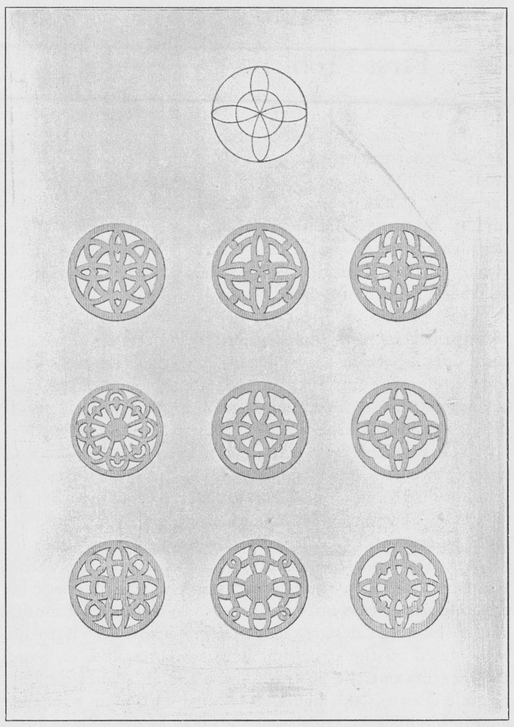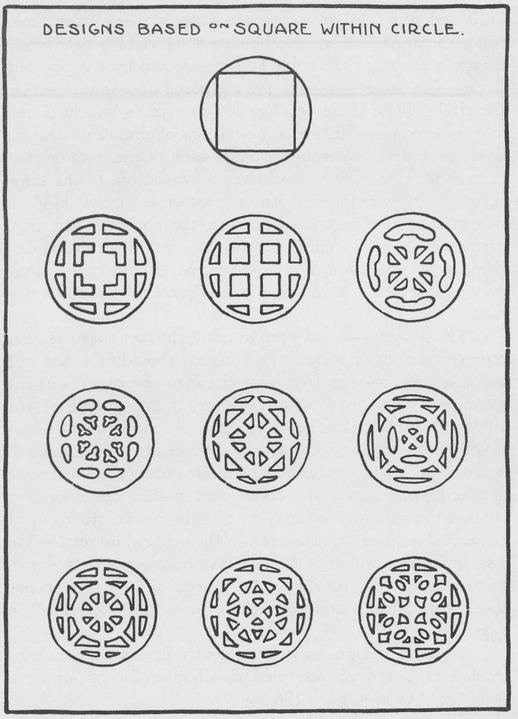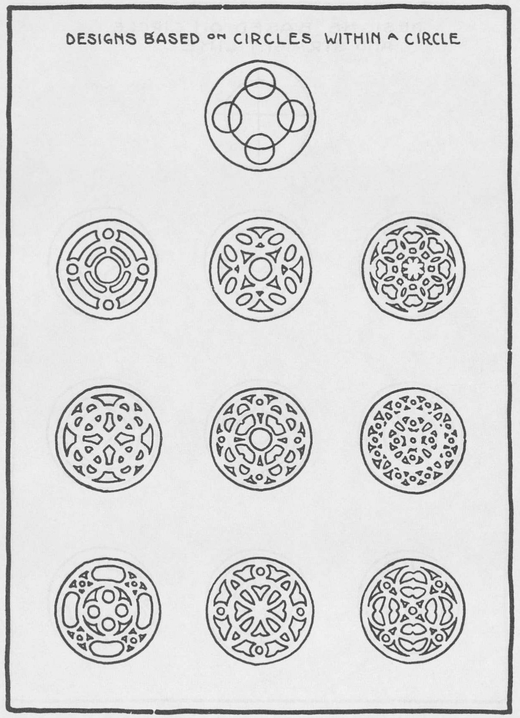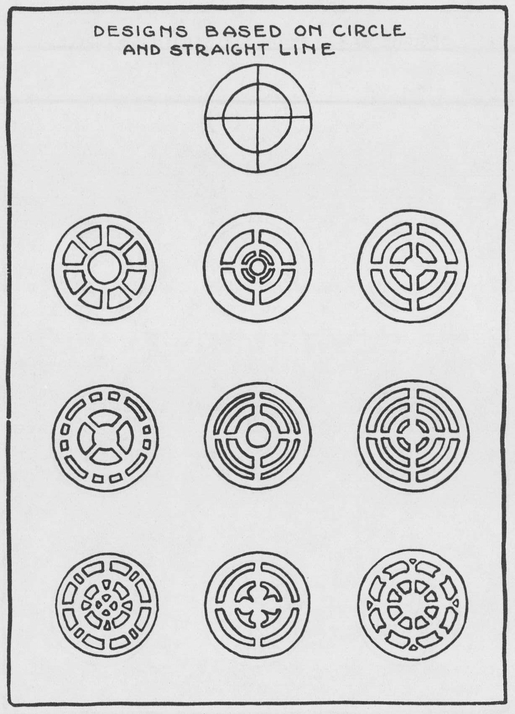CHAPTER 21
First Problems in Design
DESIGN always begins with certain conditions and restrictions. It is of primary importance that the requirements of the problem are thoroughly understood and adhered to. It should be known what purpose the object is to serve, as this usually confines it to certain limitations and possibilities, and is one of the factors which helps to determine the process of execution. The method of executing the motifs is also governed by the material in which it is to be realized and the tools to be employed. The technical process used to carry out the decoration serves in aiding the structural composition of the design. These are conditions by which the problem is governed and they help toward the solution. The more definite the requirements for the problem, the more it is confined to certain boundaries and ultimately the easier it is to produce a result.
The problem is to design a pierced circular brooch, without a stone, measuring about 1½″ in diameter. The requirements of the problem call for a contour that is circular. The next point to be determined is the kind of motif or ornament to be used and the way in which it is to be carried out. It has already been stated that it is to be pierced. Motifs may be either abstract or characteristic of natural forms. It is intended here to use an abstract motif, and to have the design radially symmetrical. It is to be constructed on the structural lines as represented on page 196, bearing out the abstract figure chosen. The simplest possible design is this figure as selected with plain bands of metal. Modifications of these bands may be made by changing slightly the metal parts either in the perforations or in the metal areas. Variety of spaces, with the proper adjustment of related proportions, adds interest and should be accomplished with a surety of purpose that is strongly convincing. Page 196 represents a circle with the structural lines and nine designs constructed upon these same lines. All of the designs illustrate the idea of curved lines radiating from the center of the circle and intersected by a concentric circle. The designs on page 198 are based on a square within the circle, while those on page 199 are circles within circles and those on page 200 are combinations of circle and straight lines. The designs displayed under each of the pure designs in lines may be rightly considered as variations of the same theme. In working out these problems, circles 1½″ in diameter should be described with the compass and then diameters at right angles, or radii may be drawn in some of them as a foundation for the structure. A concentric circle may be inserted in such a way as to divide the radii in a fine ratio.

Pencil rendering of perforated designs based on curved lines
The designer should keep in mind the fact that the lines represent bands of metal. The process should be made free and easy, proceeding from one circle to the other without stopping to make pronounced changes in any one till all the circles have been sketched in. Upon examining the designs it will be found that some are good while others will have to be discarded. The former may be improved by placing a piece of tracing paper over the design and making the necessary changes; in this way we may be able to evolve order out of chaos and at the same time retain the original intact. When a satisfactory number of designs have been accurately drawn on tracing paper, they may be spaced on the proper size sheet and transferred according to the method described on page 165.
After the designs have been neatly drawn they may be shaded in pencil as described in Chapter 21, obtaining a result as shown on page 196.
Whether the brooch is to be circular, elliptical, square, rectangular or any other shape, the problem may be solved exactly as this one of the circles.

A square within a circle dominates these designs

Circles within a circle can make simple or intricate patterns

A circle, a concentric circle, intersected by straight lines may be carried out ad infinitum as patterns